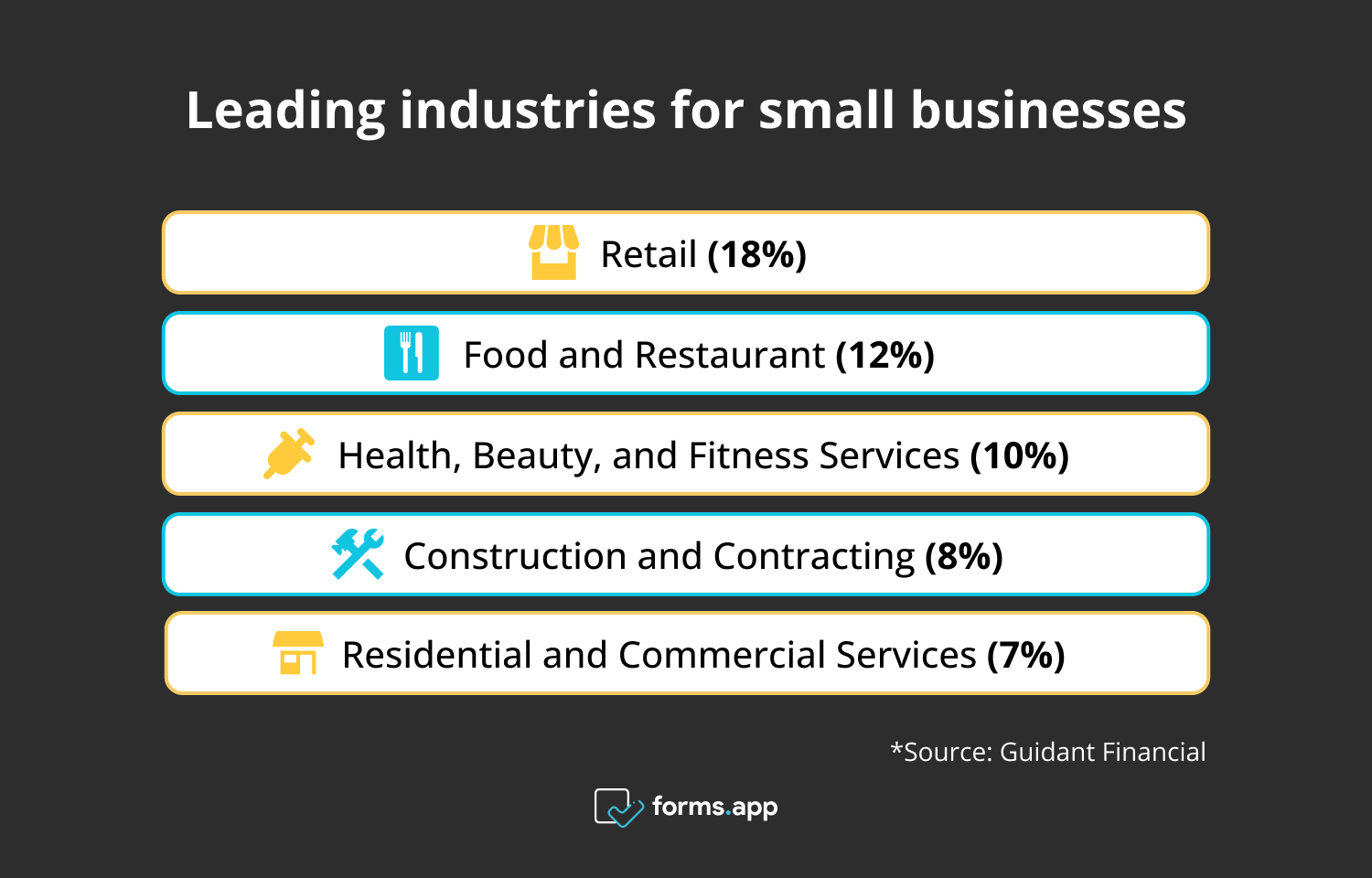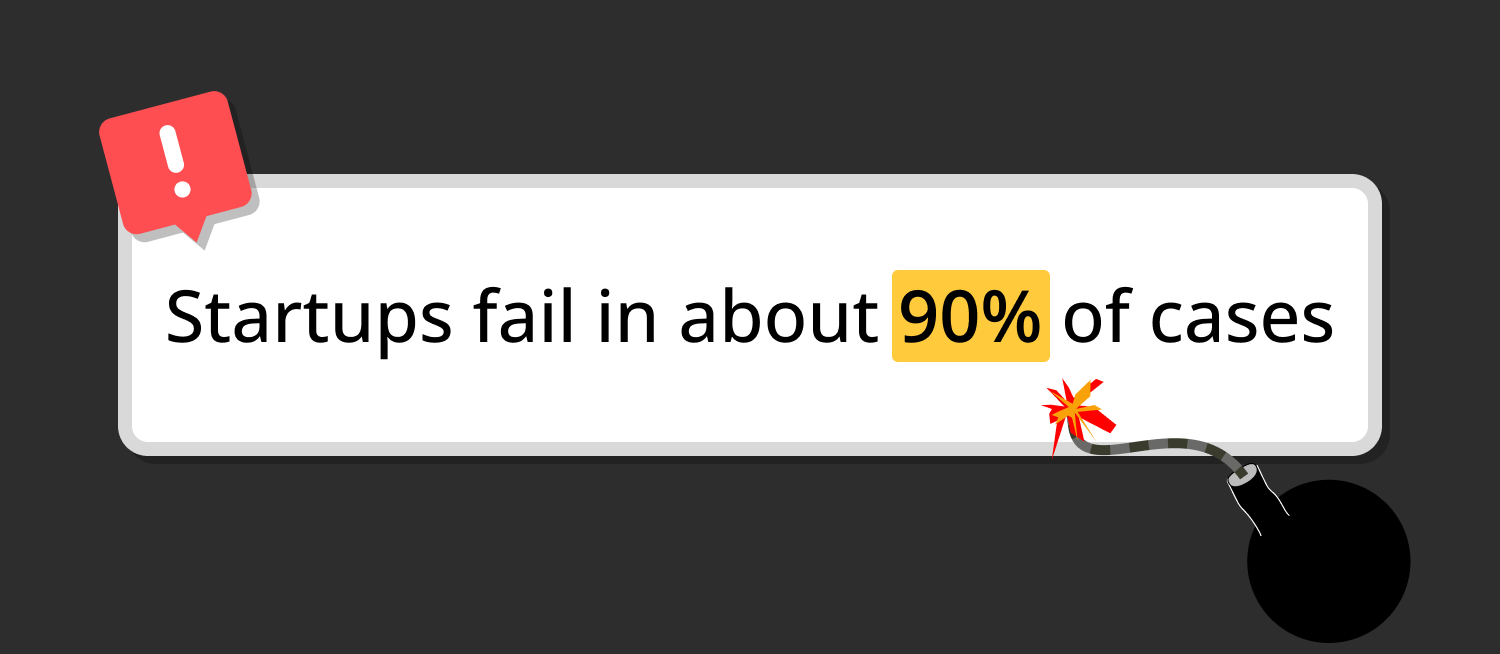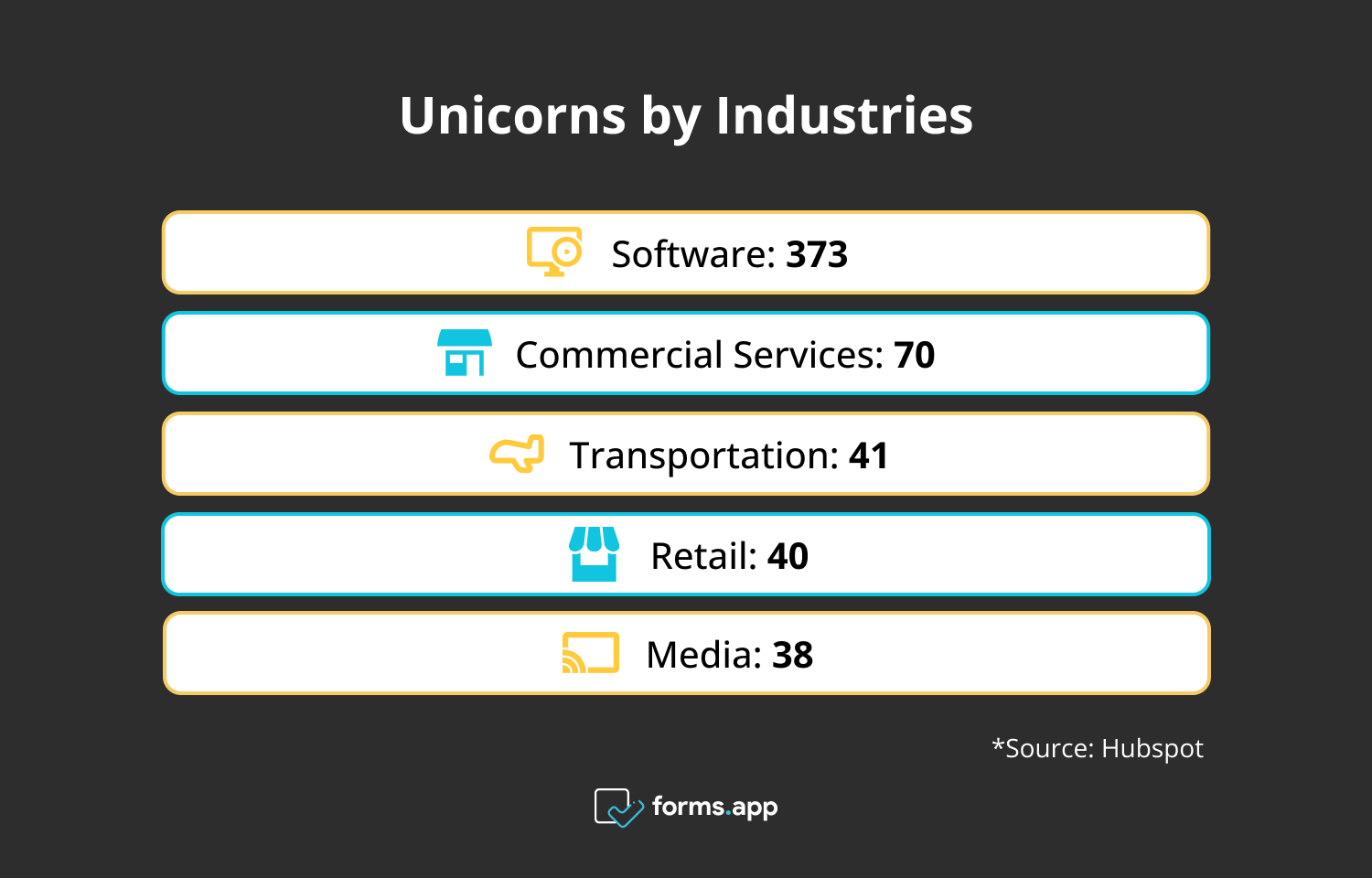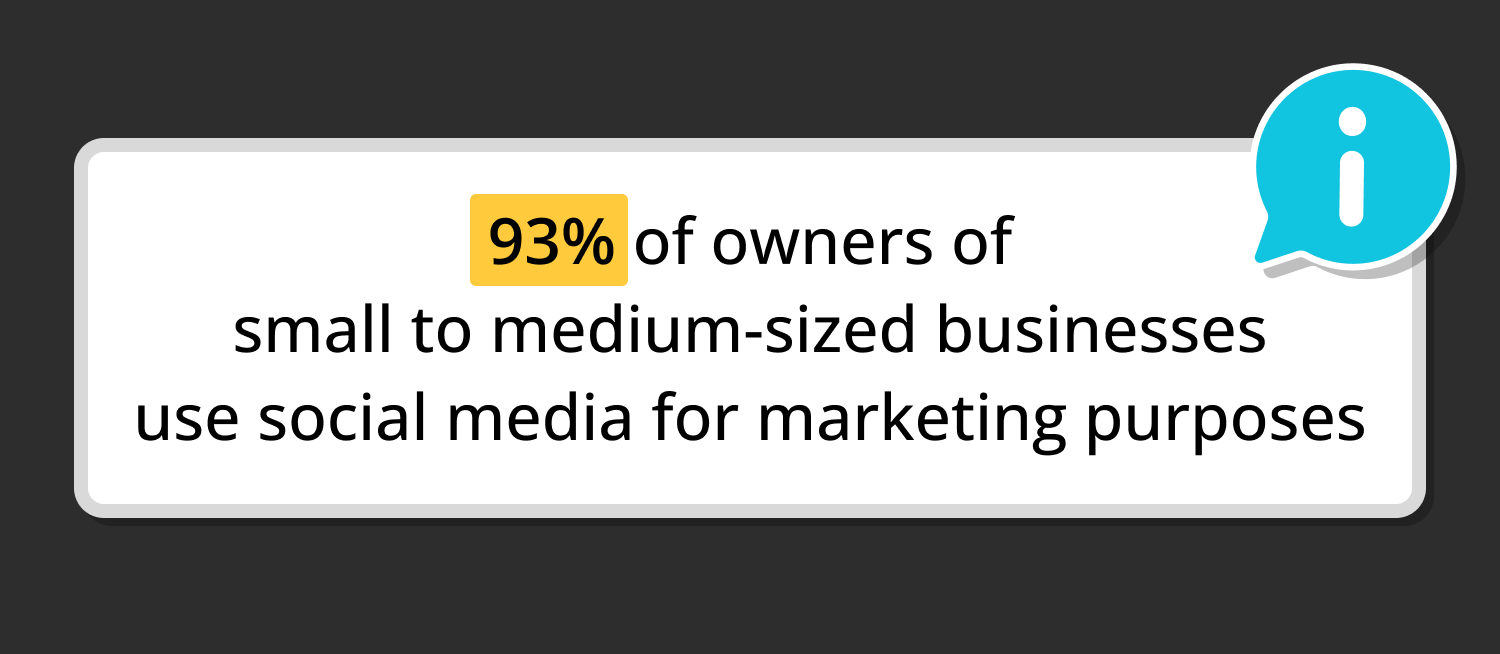Have you ever planned or currently planning to make a startup? After reading this article, you will be more encouraged, thanks to great global startup statistics and more! Startups take courage, and we will help you to find that courage. Everybody is trying to come up with new ideas in our new world, and there are tons of them. Therefore, you need to seek various creative ways to follow.
Now, loosen up and get your coffee because we have listed 60+ excellent startup statistics worldwide that will blow your mind. Also, you will learn why it is essential to look at startup statistics.
Why is it important to look at statistics about startups?
Checking the statistics about startups is really vital for you because when you look at the relevant statistics beforehand, you will be informed more convincingly about the issue. Also, seeing the numbers will feel you analyze your problems more carefully.
Each statistic that we have collected can give you little tips. According to them, you can:
- change your path
- predict the outcomes
- boost your analytical abilities
- identify false claims
Moreover, thanks to these startup statistics, you can measure your path better and step forward in a way you know what you are doing. So, do not underestimate the power of statistics before starting away.
60+ Startup statistics to look at before making a decision about your startup
Startup statistics can lead you to action before completing your business plan. The best part is that you can do all these things reliably because they are all based on research and different experiences by different businesses. So, do not forget to check the interesting 60+ startup statistics we collected below.
New business startup statistics
If you are on the edge of launching a new startup, you probably have many questions waiting to be answered. However, people have experienced the same feelings and paths as you. Checking the following statistics about new businesses and looking for the rates that symbolize concrete experiences by startup founders will make you feel more relaxed:
1. First-time business owners founded one-third of new companies in 2022
According to a study done by Digital.com, first-time business owners founded one-third of new companies in 2022. This rate proves you have no reason to wait too long to get to work. You have to be brave to start.
2. More than half of business owners want to start a new strategy
In the first half of 2023, 74% of businesses want to either grow or maintain their marketing spend. Moreover, intentionally or unintentionally, more than half of the business owners want to start a new strategy or continue with the present one.
3. Most popular industries: retail, business, finance, computer, and information technology
Again, according to Digital.com, the most popular industries to launch a new business are retail, business, finance, computer, and information technology. For that reason, before making your final decision about your new startup plan, do not underestimate these sectors.
4. In 2023, one in five Americans intends to launch a new business
So far, in 2023, two in five people in the united states has intended to launch a new business. So, you do not need to feel alone because many people are thinking about it; however, this statistic also should remind you that you must show your difference in this endless startup world.
5. The survival percentage of new employer enterprises over a 15-year period was estimated at around 34%
SBA’s reported data shows that the survival percentage of new employer enterprises over a 15-year period was estimated to be around 34%. So, if you are thinking about launching a long-lasting startup, you should choose your path and create your startup idea according to it.
6. Around 5 million new enterprises were established between January 2021 and November 2021
A little under 5 million new firms were established between January 2021 and November 2021, according to the Census Bureau’s Business Formation Statistics, a rise of 55% over the same period in 2019.
7. 1 in 10 business owners have committed more than $100k
Digital.com underlines that while 1 in 10 business owners have committed more than $100k of their own money, 1 in 8 entrepreneurs have raised at least $100k for a new startup. So, be careful where, how, and which way you invest your money.
8. Unpopular industries
Ibis World has listed the top 10 fastest declining industries in the US by Revenue Growth (%) in 2023, and they are as follows given below:
- Iron & Steel Manufacturing (-19.2%)
- Paper Wholesaling (-14.7%)
- Forest Support Services (-14.4%)
- Sing&Banner Manufacturing Franchises (-13.7%)
- Invoice Factoring (-11.9%)
- Conveyancing Services (-11.8%)
- Semiconductor Machinery Manufacturing (-11.7%)
- Chicken Egg Production (-10.9%)
- Prefabricated Home Manufacturing (-10.6%)
- Iron Ore Mining (-9.7%)
So, pay attention to these industries while choosing your sector.

Fastest declining industries in US
9. More than 180.000 fewer small firms closed than opened
According to the data from the U.S. Small Business Administration (SBA), 1.1 million new small companies opened between March 2020 and March 2021. In this time period, 180.528 more small companies opened than closed.
Small business startup statistics
Small business administration might seem puzzling. Starting a business goes through many stages and has to make people think of multiple ways to calculate the outcomes better. Nevertheless, you are not alone. Looking at the percent of small businesses will help you. If you want to answer your questions about the issue, here are some small business startup statistics in 2023:
10. 25% of small company owners are women, and 75% are men
Guidant Financial reported that in 2023, while women made up 25% of small business owners, men made up 75%. It seems that men continue to have a prominent presence in the sector. Only 0.37% of people choose to identify as a gender other than male or female.
11. 76.2% of small businesses women owners are White or Caucasian
76% of the respondents to the study identified as White or Caucasian. Other ethnic groups were represented to a degree of around 5%, including Black or African-American (5.19%), Asian or Asian-American (4.83%), and Hispanic, Latino, or Spanish origin (4.70%).
12. A new construction firm has a 36.4% chance of remaining in business for more than 5 years
Small Business Trends proves that the chances of a new company surviving its formative five years differ significantly by industry. While the rate of construction is 36.4%, mining’s rate is 51.3%. So, it pays to grasp small business failure rates by industrial sector if you want to learn more about them.
13. 77% of small startups are optimistic about their industry’s prospects
According to the study conducted in October 2021, more than three-quarters of small business owners are optimistic about the future. U.S. Chamber of Commerce’s survey says that 42% of the respondents intended to raise investments in their companies, while 38% planned to hire additional employees. Compared to 2020, each of those numbers represents significant increases.
14. Leading industries for small businesses
Guidant Financial underlines that the leading sectors for small businesses have changed as of 2023, and it lists the sector as follows:
- Retail (18%)
- Food and Restaurant (12%)
- Health, Beauty, and Fitness Services (10%)
- Construction and Contracting (8%)
- Residential and Commercial Services (7%)

Leading industries for small businesses
15. Small business owners are moving away from the established, powerful political parties
Small business owners have shifted away from the established major political parties during the last 2 years. Small business owners identifying as Democratic (-10%) or Republican (-9%) have declined by about 10% since 2021.
16. Degree rates of small business owners
According to Guidant Financial’s study, most business owners (41%) and a sizeable number (29%) have bachelor’s degrees. The percent of the business owners polled had an associate’s degree, while 4% had a PhD. As can be seen from the results of the study, education matter in the small business world.
17. Motivations of small business owners
Each person has their own to pursue a new startup plan, but they have all might different reasons for it. Guidant Financial did research on this topic in 2023 in America, and according to the study, the root of motivations and rates can be categorized as follows:
- Ready to be your own boss (28%)
- Dissatisfaction with corporate America (23%)
- Wanted to pursue your passion (13%)
- Laid off/ Job outscored (10%)
- Not ready to retire (10%)
- The opportunity presented itself (9%)
- Other (6%)
18. Age range of small business owners
The generation gap between small business owners is revealed by Forbes Advisor in 2023. The survey shows that while Gen Z (47.20%) and Baby Boomers (39.63%) make up most of the business, Millenials make up 12.92%.
19. Small startups provide 44% of the GDP in the United States
Small startups contributed over 50% (48%) of the GDP in 1998. In 2014, this rate dropped to 43.5%. However, the government views small businesses as essential since they foster innovation, create jobs, and spur economic expansion.
20. More than 80% of small businesses do not have any workers
Forbes Advisor’s statistic shows that 27.1 million of the 33.2 million small companies are owned and operated by a single person and had no workers. This indicates that only one person can easily manage small businesses.
21. Rates of the industries
The biggest rate, with 34.72%, belongs to Education and Health Services. Then, Professional and Business Services follow in the list with 19.25%. Wholesale and Retail Trade makes up the third rate with 18.98%. The rest goes as follows:
- Manufacturing (14.71%)
- Leisure and hospitality (12.63%)
- Construction (11.27%)
- Financial activities (10.72%)
- Transportation and utilities (9.37)
- Public administration (7.41%)
- Other services (7.17%)
- Informatiıon (2.72%)
- Agriculture-related (2.29%)
- Mining, quarrying, and oil and gas extraction (603)
22. In the US, small businesses make up 99.9% of all companies
The U.S. Small Business Administration claims that small businesses make up the great majority of all companies in the country. America is home to an incredible 32.2 million small businesses. This rate proves that America is an excellent opportunity for small business startup followers.
23. Since 1982, the number of small startups in the US has doubled
Small firms operating in America have doubled in only 3 decades. Even commercial properties are being added to by these small startups. According to estimates, American small startups use 30%-50% of all commercial space, equivalent to 20-34 billion square feet.
24. Only 16% of small businesses employ one to ninety people
While 16% of small businesses have between 1 and 19 employees, the majority of small enterprises have no employees at all. There are 33.2 million small firms, but only 65.003 of them employ 20 to 499 people.
25. Nearly the past 25 years, small enterprises have created nearly 12.9 million new employment
Even though a lone entrepreneur runs a typical small firm, they nonetheless provide a lot of job possibilities in the United States. Small firms have added approximately 13 million net new employment over the past 25 years.
26. Small business owners earn 3% more per year than the national median pay
An average small business owner pays $60.151, just 3% more than the national median pay of $58.260. According to pay statistics from Payscale, small business owners make an average income of $29.000 on the low end and $128.000 on the high end.
27. Small startup owners are happy
Luisa Zhou indicates that 74.86% of small startup owners are happy. This is an excellent rate for those who are looking to find a way to work happily. Do not forget to review the other stats to happily do your own business and make your dreams come true.
28. Happiness level of women small business owners
The findings of Guidant Financial prove that women in business also exhibit impressive resiliency and optimism. 34% of women who are in the small business are very happy. 30% are somewhat happy. While 16% say they are neutral, 14% are somewhat unhappy, and 6% are very unhappy.
Startup funding statistics
Each year, lots of people spend billion dollars on startups. It is an undeniable fact that there is always a possibility for startups to fail. So, paying attention to how you invest or spend your money for the startup is critical. Look at the startup fundings statistics given below:
29. A record $445 billion was invested in venture capital globally in 2022
In 2022, venture capital funding worldwide suppressed $445 billion. From $11.5 billion in 2020, startups in India raised a record $42 billion in 2021. LesVenture, AngelList India, Stride Ventures, Sequoia Capital, and other companies are among the most active investors in India’s startup ecosystem, according to Inc 42.
30. Great investments in startups
In 2021, venture capital financing reached a record high of $671 billion, a 32% increase over the year before, according to KPMG analysts. As more investors prefer to invest in companies with the potential for development and profitability, this trend is anticipated to continue in 2023.
Startup failure statistics
Startup failure rate statistics show where people made mistakes in the whole startup process. By looking at the statistics with their explanation, you can have a clue about what to do or what not to do while choosing your startup path. If you want to access the data about startup failures, check these small business statistics:
31. Within the first year, 1 in 5 firms fail
Fundera emphasizes that 50% of enterprises fail by tear 5, 30% fail in the first year, and 20% fail in the second year. These rates demonstrate how crucial the first 5 years are. In the beginning years, each step is important for new startups.
32. Due to a lack of consumer demand, over half of the firms fail
42% of the enterprises that fail during the first five years, or almost half of all businesses, do so due to a lack of customer demand. So, it is really important to note that you should gather market evidence before plunging headfirst into a new endeavor.
33. Lack of funding is the second most frequent cause of small business failure
Running out of funds ranks second, accounting for 38% of small business failures. You need lots of money for your startup plan, needless to say; however, it is vital for you to spend and arrange your budget, especially for the initial number of years.
34. Biggest failure rate: professional, scientific, and technological services sector
The professional, scientific, and technological services sector has the highest failure rate overall, at 19.4% in the first year. Part of the reason for this is probably due to the volatility of this continuously changing and developing business.
35. Startups fail in about 90% of cases
According to the findings, 90% of startups fail. The percentage might seem scary. In order not to fail, some sure steps should be taken by the startup owners. So, some aspects, such as the quality of the product and services

Startups fail in about 90% of cases
36. The District of Columbia has the highest percentage of first-year company failures
In the capital city, where 28.0% of enterprises fail in their first year, it is followed by Rhode Island and Missouri, both of which have 27.2% failure rates. So, it might be a clue for you not to start your business plan.
37. The rate of first-year company failures is the lowest in California
13.2% of firms fail in California in their first year, followed by 16.7% in Washington and 18.5% in Nevada. Despite having the second-lowest failure rate in the first year, Washington has the greatest failure rate (78.5%) after 10 years.
38. Inflation is a reason for the failure of small businesses
Ownership of a business can be challenging due to the expense of materials. However, profit margins might deteriorate when you factor in inflation- whose rate nearly doubled between 2020 and 2022- making it more challenging to sustain.
39. The industries with the second-and-third- highest 1-year failure jobs
Here is the list of Lending Tree:
- Legal advice and representation
- Accounting, bookkeeping, and payroll services
- Architectural engineering and specialized design services
- Office Administration
- Document preparation
Startup unicorn statistics
We did not forget you unicorn club! The statistics of startup unicorn are more specific because they appeal to more specific and small groups (like tech startups). If you are after silicon valley, have a look at the statistics that we have collected for you about startup unicorn:
40. The number of startup unicorns increased from 39 to 900
According to HubSpot’s list, while there were only 39 unicorn startups in 2013, in 2022, there were nearly 900 unicorn startups worldwide. Additionally, it was worth more than $3.5 trillion in total.
41. Valuation of some startup unicorn companies
There were close to 900 unicorn firms around the globe in 2022, with a total valuation of more than $3.5 trillion. A complete list of unicorn businesses was compiled by Hubspot, which emphasized the amount of value and the nation:
- BYTEDANCE: %360B
- Stripe: %152B
- SpaceX: %100B
- Coupang: %60B
- Klarna: %46B
- Instacart: %45B
- Canva: %40B
- Grab: %40B
- Juul: %38B
- Databricks: %38B
- Flipkart: %38B
- Revolt: %33B
- Waymo: %31B
- Ele.me: %30B
- Nubank: %30B
- Epic Games: %29B
- Rivian: %28B
- Chime: %25B
- FTX: %25B
- Kraken: %20B
- JD Digits: %19B
- Bank of Quanzhou: %18B
- Paytm: %17B
- BYJU’S: %17B
- SZ DJI Technology Company: %16B
42. Top startup unicorn investors
Without the financial support of investors and venture capitalists, unicorns would not have achieved their goals. Here is the list shared by HubSpot’s data for startups:
- Tiger Global Management: Invested in 155 unicorn companies
- SoftBank Investment Advisers: Invested in 96 unicorn companies
- Coatue Management: Invested in 78 unicorn companies
- Accel: Invested in 74 unicorn companies
- Sequoia Capital: Invested in 73 unicorn companies
- Andreessen Horowitz: Invested in 68 unicorn companies
- Insight Partners: Invested in 63 unicorn companies
- Y Combinator: Invested in 61 unicorn companies
- Sequoia Capital China: Invested in 58 unicorn companies
- Temasek Holdings: Invested in 51 unicorn companies
- GV: Invested in 51 unicorn companies
- Lightspeed Venture Partners: Invested in 51 unicorn companies
- DST Global: Invested in 50 unicorn companies
- Salesforces Ventures: Invested in 48 unicorn companies
- General Catalyst: Invested in 48 unicorn companies
43. Unicorn Companies by countries
Unicorn startups have spread worldwide; however, the United States has the most unicorn company rate, which welcomes many American dreamers. Have a look at the number of unicorn companies by location listed by HubSpot:
- United States: 464 unicorn companies
- China: 162 unicorn companies
- India: 44 unicorn companies
- United Kingdon: 29 unicorn companies
- Germany: 18 unicorn companies
- Canada: 15 unicorn companies
- France: 14 unicorn companies
- Israel: 14 unicorn companies
- Singapore: 12 unicorn companies
- Brazil: 9 unicorn companies
- Netherlands: 5 unicorn companies
- Indonesia: 5 unicorn companies
- Hong Kong: 4 unicorn companies
- Japan: 3 unicorn companies
44. Unicorns by Industries
If you learn about the most well-liked business sectors, particularly unicorn enterprises, you can research for your own company might get off to a faster start:
- Software: 373
- Commercial Services: 70
- Transportation: 41
- Retail: 40
- Media: 38

Unicorns by Industries
45. Top tools used by Unicorns
Especially in the beginning, unicorns startups need various types and kinds of techs and tools that will make them more powerful. By looking at the data of BuilWith and SimilarTeach, HubSpot listed the findings as follows:
- CMS: HubSpot CMS, WordPress, Salesforce, Contentful, Webflow
- Email: Amazon SES, Sendgrid, Mandrill, MailChimp, Postmark
- Web Hosting: Amazon AWS, Google Cloud, CloudFare, Alibaba, China Telecom
- Marketing Automation: HubSpot CMS, Marketo, Pardot, TowerData, Live Ramp
- Customer Communication: Zendesk, Intercom, Kustomer, Customer IO, Stella Service
46. Number of unicorns globally
According to Statista, as of November 2022, the software sector employed the majority of unicorns around the globe. In this sector, there were more than 760 privately held companies with a more than $1 billion valuation. In contrast, the financial services industry employed 335 unicorns:
- Software: 762
- Financial Services: 338
- Information Technology: 307
- Internet Services: 271
- Commerce and Shopping: 270
- Data and Analytics: 257
- Science and Engineering: 256
- Other: 214
- Transportation: 206
- Hardware: 184
- Artificial Intelligence: 170
- Payments: 162
- Healthcare: 146
- Mobile: 141
- Lending Investments: 114
- Apps: 112
- Sales and Marketing: 98
- Media and Entertainment: 94
- Professional Services: 92
- Manufacturing: 92
47. The value of all unicorns worldwide is $3.83T
According to the data from CB Insights, the total value amount of the unicorn companies is $3.83T. The number changes as the companies go bankrupt, exit, or go down round, needless to say. All 1,206 worldwide unicorn firms have been mapped according to their principal markets of operation using the CB Insights database.
48. New unicorns births fall to a 6-year low
CB Insights’s statistic illustrates that in the first quarter of 2019, there were 36 new unicorns. In the last quarter of 2021, the number reached 148 in the second quarter of 2021, which was the peak. 2021 closed the year with 138 new unicorns; however, in the first quarter of 2023, there were only 13 new unicorns.
49. There were 1,000 active unicorns startups in 2022
According to Bloomberg, the number of active unicorns was 1,000, that worth $1 billion or more. And Ellen Huet underlines that nearly 10 years after, the word “unicorn” was first used to designate a certain type of private company.
50. Only 1% of startups go on to become unicorn startups
According to CB Insights, 12 firms achieved unicorn status in their latest research, with the likelihood of doing so low at about 1% (1.07%). Uber, Airbnb, Slack, Stripe, and Docker are some of the most touted digital firms of the last 10 years.
51. Large unicorn startups have racked up debt of $1 billion or more to increase their chances of success
Pitchbook shows us that it was reported that Uber was seeking a leveraged loan of up to $2 billion. Similarly, the Series E round of Airbnb, the short-term rental marketplace with the highest valuation in the world, raised about $1.6 billion at the end of last year, giving it a $25.5 billion valuation.
Social media and startup statistics
The strong relationship between marketing and social media cannot be denied these days. Especially for small startups, social media is an excellent tool for them to increase their success and make their existence heard. For your startup, do not forget to look at the social media statistics given below:
52. 93% of owners of small to medium-sized businesses use social media for marketing purposes
The astounding 93% is a testament to social media’s unwavering power to inspire businesses to widen their horizons, establish their brand presence, and captive a sizeable audience with their offers. For that reason, not using social media for your startup would be a big handicap for you.

93% of SME owners use social media for marketing purposes
53. 70% of marketers have successfully gained customers via social media
When we consider the percentage of social media usage today, it will not be surprising that in small to medium startups, 70% have successfully gained their customer's thanks to social media.
54. Twitter usage by small startups results in twice as many leads
Small companies are continuously looking for new ways to expand and succeed in the rapidly changing digital world. A fascinating finding showed that using Twitter increases lead generation for small firms by double.
55. To reach new clients, 49% of small startups have employed social media advertising
The striking finding is that an outstanding 49% of small businesses have used social advertising to engage with new clients. This situation unquestionably highlights the crucial role social media currently plays in the area of company growth.
56. 52% of owners of small to medium-sized startups reported that social media increased the sales
Intriguing research from small to medium-sized business owners shows that social media marketing has boosted their sales. With 52% of these company owners agreeing with this tendency, it is clear that leveraging the power of social media has involved a critical tactic.
57. 73% of consumers follow the brand on Instagram to keep up with the company
In the study, a startling 73% of users actively seek out the businesses they want to follow, customizing their feeds with pertinent news and information. This also means that if you use social media in an active way and share posts or stories regularly, they will be more informed about your announcements.
58. A purchasing decision was dependent on social media material for 64% of consumers
The finding that 64% of consumers have made a purchase choice based on social media material is a significant indicator of the influence that the platforms like Instagram, Twitter, Tiktok, or Youtube have on influencing consumer behavior in the world of small startups
59. In 2020, 92% of small companies want to boost their spending on social media advertising
Zipdo underlines that one cannot ignore the compelling power of the fact that 92% of small startups or companies have their sights set on increasing their social media advertising expenditure in 2020 when delving into the world of small company social media statistics.
60. 89% believe brand recognition is possible with social media
We have been discussing the importance of social media in startup plans. But lots of people are trying to announce their brand, activities, announcements, products, or services on social media channels. However, 89% of them still praise social media’s efficiency in raising brand recognition.
Final thoughts
To wrap it up, the number of people who want to invest their money in new startup ideas is increasing. Everybody wants to build their career paths; however, following up on a proper plan is vital, and looking at all these statistics will help you. Each statistic will give you tips because they all carry experience. We hope to give you an inspiration before you get to work!
Şeyma is a content writer at forms.app. She loves art and traveling. She is passionate about reading and writing. Şeyma has expertise in surveys, survey questions, giveaways, statistics, and online forms.



